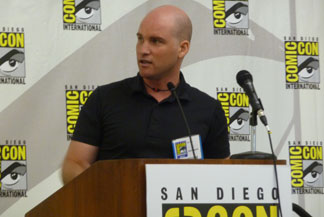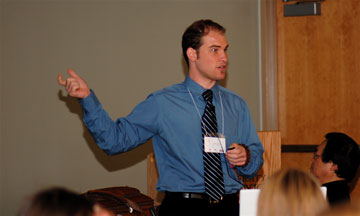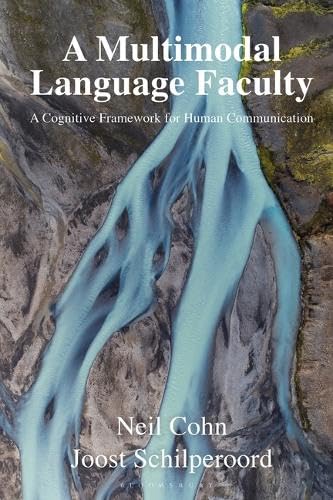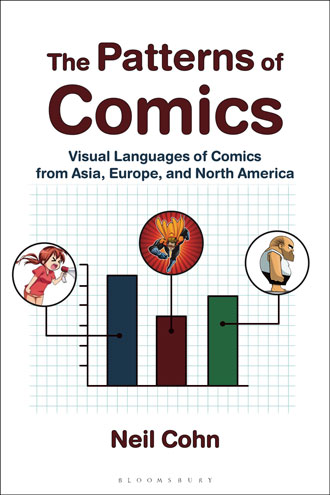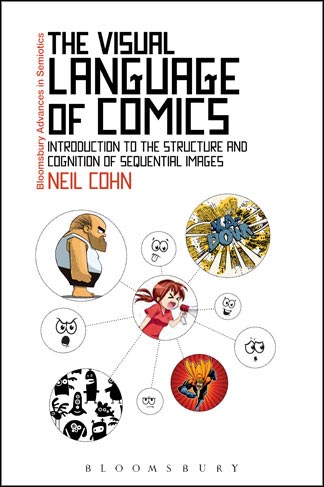Neil Cohn
Neil Cohn has been fascinated with drawing and comics his whole life. By age 10, he was selling his own created comics via mail order catalogue, and as a teenager throughout the 1990s he worked for Image Comics and Todd McFarlane Productions at the San Diego Comic-Con. His artistic work appears in Meditations (2005), We the People (2004), A User’s Guide to Thought and Meaning (2012), and The Graphic Canon, Vol. 2 (2012).
While taking a linguistics class in college at UC Berkeley, Neil began noticing similarities between the structure of language and the structure found in the “visual language” used in comics. Since then, his research has argued for similarities between the structure, cognition, and development of visual languages and spoken and signed languages. He is the author of over 100 papers, 5 books, and 2 graphic novels. The foundation for his research was argued in his book The Visual Language of Comics (2013), and furthered in his 2021 Eisner nominated Who Understands Comics? (2020) and The Patterns of Comics (2024). He has helped create new emoji 😮💨🫥🫠🥹, and his work inspired Android’s Emoji Kitchen and the creation of automatically generated news comics at BBC News.
In 2020, Neil began the TINTIN Project funded by a European Research Council Starting Grant. This project compares the patterns in visual languages used in comics from across the world, and explores their relationships to the structures in spoken languages.
Neil received his Ph.D. in Psychology from Tufts University working with Ray Jackendoff, Gina Kuperberg, and Phil Holcomb. He did his postdoctoral research working with Marta Kutas and Jeff Elman at UC San Diego. He is currently an Associate Professor at the Tilburg center for Cognition and Communication at Tilburg University, in the Netherlands.
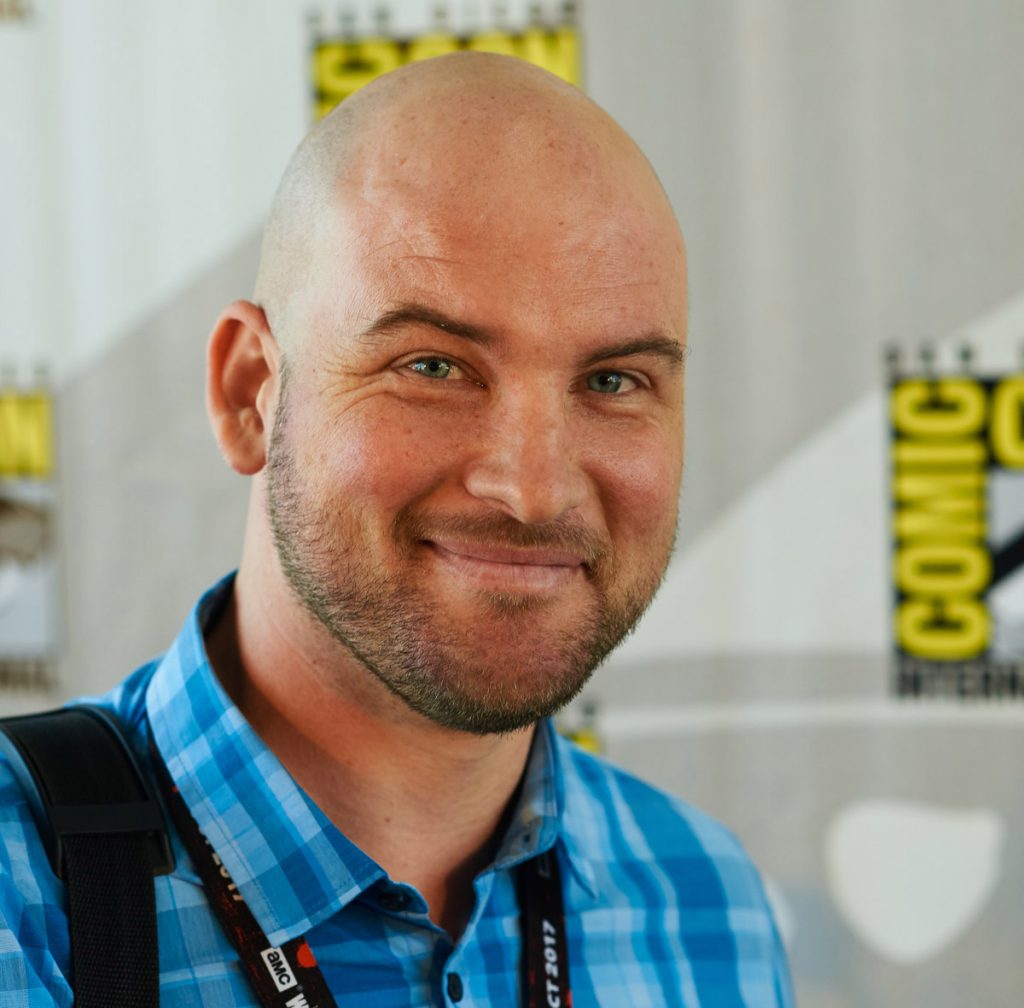
Contact information:
Neil Cohn, Ph.D.
Department of Communication and Cognition, Tilburg University
P.O. Box 90153, 5000 LE Tilburg
The Netherlands
neilcohn@visuallanguagelab.com
Curriculum Vitae
Education
2012. Ph.D. Tufts University. Psychology
• Advisors: Ray Jackendoff, Gina Kuperberg, Phil Holcomb
2010. M.S. Tufts University. Psychology
2005. M.A. University of Chicago. Social Sciences (multidisciplinary)
• Advisor: Christopher Johnson
2002. B.A. with Honors. University of California, Berkeley. Asian Studies: Japan and Buddhism
• Advisors: Eleanor Rosch, Dan Slobin
2001. Tsuru Bunka Daigaku (Tsuru University). Tsuru, Japan. (Exchange Student)
Academic Employment
2020-Present. Associate Professor. Department of Communication and Cognition. Tilburg University.
2016-2020. Assistant Professor (tenured). Department of Communication and Cognition. Tilburg University.
2014-2015. Postdoctoral Fellow. Institute for Neural Computation, UCSD.
2013-2015. Lecturer. Departments of Linguistics and Cognitive Science, UCSD.
2012-2013. Postdoctoral Fellow. Center for Research in Language, UCSD.
• Advisors: Marta Kutas, Jeff Elman
2011. Lecturer. Experimental College. Tufts University.
2009-2010. Lecturer. Osher Lifetime Learning Center. Tufts University.
2006-2012. Teaching assistant. Psychology Department. Tufts University.
2005. Research Assistant. Comparative Human Development, University of Chicago. (PI: Christopher Johnson)
Editorial boards
2020-Present. Founding Editorial Board Member. Graphic Medicine Review.
2020-Present. Board of Reviewers. Cognitive Science.
2019-Present. Editorial Board. Memory & Cognition
2018-Present. International Scientific Board. L’ETERNAUTA (Comics and Media). Alessandro Polidoro (Publisher).
2017-Present. Editorial Board. Journal of Graphic Novels and Comics
Awards
2021. Nominated for the 2021 Eisner Award for Best Academic/Scholarly Work (for Who Understands Comics?)
2019. Early Career Impact Award. Federation of Associations in Behavioral and Brain Sciences (FABBS) and the Cognitive Science Society.
2013. Robert J. Glushko Dissertation Prize. Cognitive Science Society.
2007. M. Thomas Inge Award for Comics Scholarship.
2003. Best Essay, Berkeley Undergradate Journal.
2002. Member, National Society of Collegiate Scholars.
Funding
2022-2025. Learning Concepts in Different Languages: Cognitive and Affective Mechanisms. Co-PI with Yen Na Yum, Phillip Holcomb, Duo Liu, Katherine Midgley, and Jie Wang. The Research Grants Council, Hong Kong SAR.
2022-2025. Dismantling the “Visual Ease Assumption”: Cross-modal examinations of narrative comprehension in individuals with autism. Co-PI with collaborator Emily Coderre and Emily Zane. US Department of Defense.
2019-2024. Language processing: domain general or domain specific? ERP studies of verbal and visual language processing in children with typical and atypical language development. Co-PI with collaborators Annika Andersson, Kristina Hansson, and John Drury. Marcus and Amalia Wallenberg Foundation.
2019-2024. Visual narratives as a window into language and cognition (TINTIN). European Research Council Starting Grant.
2019-2020. What happens next? Predictive abilities during linguistic and visual narrative comprehension in individuals with autism spectrum disorders. Co-PI with collaborators Emily Coderre and Trevor Brothers. University of Vermont REACH grant
2017-2019. Visual narrative to study narrative comprehension abilities in individuals with autism spectrum disorder (ASD). Co-PI with collaborator Emily Coderre. University of Vermont.
2017-2019. An ERP study of processing of visual narratives in school-aged children. Co-Investigator with Annika Andersson and Kristina Hansson; Lund University.
2017-2019. The Role of Working Memory in Multimodal Reading Comprehension in Bilingual Children. Co-Investigator with Yen Na Yum; Hong Kong Institute of Education.
2017. Tilburg University Grassroots Project; Interactive polling with engagement platform REEF. Co-investigator with Anne-Marie van Hoof.
2016. Multimodal proficiency and its influence on the processing of text and graphics when reading in L1 versus L2. Co-Investigator with Yen Na Yum; Hong Kong Institute of Education.
2014-2015. UCSD Institute for Neural Computation Postdoctoral Training Grant (T32).
2012-2013. UCSD Center for Research in Language Postdoctoral Training Grant (T32).
2007. Tufts Graduate Institute for Teaching Fellowship.
2006-2012. Tufts Center for Cognitive Studies Graduate Fellowship (Tuition and Stipend)
Scholarly publications
Books
Cohn, Neil and Joost Schilperoord. 2024. A Multimodal Language Faculty: A Cognitive Framework for Communication. London: Bloomsbury
Cohn, Neil. 2024. The Patterns of Comics: Visual Languages of Comics from Asia, Europe, and North America. London: Bloomsbury.
Cohn, Neil. 2020. Who Understands Comics? Questioning the Universality of Visual Language Comprehension. London: Bloomsbury.
Cohn, Neil (Ed.). 2016. The Visual Narrative Reader. London: Bloomsbury.
Cohn, Neil. 2013. The Visual Language of Comics: Introduction to the Structure and Cognition of Sequential Images. London: Bloomsbury.
Cohn, Neil. 2003. Early Writings on Visual Language. Carlsbad: Emaki Productions.
Papers
To Appear
Szawerna, Michał and Neil Cohn. To Appear. Iconicity in the visual lexicons of comics. Olga Fischer, Kimi Akita, and Pamela Perniss (eds). The Oxford Handbook of Iconicity in Language. Oxford, UK: Oxford University Press (PDF)
2024
Weissman, Benjamin, Neil Cohn, and Darren Tanner. The electrophysiology of lexical prediction of emoji and text. Neuropsychologia. 198 (108881):1-11
Cohn, Neil, Lincy van Middelaar, Tom Foulsham, and Joost Schilperoord. 2024. Anaphoric distance dependencies in visual narrative structure and processing. Cognitive Psychology. 149: 101639
Lindfors, Hanna, Kristina Hansson, Eric Pakulak, Neil Cohn, and Annika Andersson. 2024. Semantic processing of verbal narratives compared to semantic processing of visual narratives: an ERP study of school-aged children. Frontiers in Psychology 14. doi: 10.3389/fpsyg.2023.1253509.
2023
Hacımusaoğlu, Irmak and Neil Cohn. 2023. The meaning of motion lines?: A review of theoretical and empirical research on static depiction of motion. Cognitive Science. 47 (11):e13377
Atilla, Fred, Bien Klomberg, Bruno Cardoso, Neil Cohn. 2023. Background Check: Cross-Cultural Differences in the Spatial Context of Comic Scenes. Multimodal Communication.
Tavares, Rui, Mireia Alemany-Pagès, Sara Araújo, Neil Cohn, João Ramalho-Santos, Anabela Marisa Azul. 2023. Comics in Science and Health Communication: Insights from Mutual Collaboration and Framing a Research Practice. International Journal of Qualitative Methods. 22.
Cohn, Neil and Joost Schilperoord. 2023. Visual languages and the problems with ideographies: A commentary on Morin. Brain and Behavioral Sciences. 46: e240
Klomberg, Bien, Irmak Hacımusaoğlu, Lenneke Lichtenberg, Joost Schilperoord, and Neil Cohn. 2023. Continuity, Co-reference, and Inference in Visual Sequencing. Glossa: a journal of general linguistics 8(1).
Coderre, Emily L. and Neil Cohn. 2023. Individual differences in the neural dynamics of visual narrative comprehension. Psychonomic Bulletin and Review.
Cohn, Neil, Bruno Cardoso, Bien Klomberg, and Irmak Hacımusaoğlu. 2023. The Visual Language Research Corpus (VLRC): An annotated corpus of comics from Asia, Europe, and the United States. Language Resources and Evaluation.
Patrick, Morgan, Neil Cohn, John Mertus, and Sheila Blumstein. 2023. Sequences in harmony: Cognitive interactions between musical and visual narrative structure. Acta Psychologia. 238:103981
Hacımusaoğlu, Irmak, Bien Klomberg, and Neil Cohn. 2023. Navigating Meaning in the Spatial Layouts of Comics: A cross-cultural corpus analysis. Visual Cognition. 31: 126-137
Weissman, Ben, Jan Engelen, Elise Baas and Neil Cohn. 2023. The Lexicon of Emoji? Conventionality Modulates Processing of Emoji. Cognitive Science, 47: e13275.
Cohn, Neil, Irmak Hacımusaoğlu, and Bien Klomberg. 2023. The framing of subjectivity: Point-of-view in a cross-cultural analysis of comics. Journal of Graphic Novels and Comics. 14(3): 336-350
2022
Hacımusaoğlu, Irmak and Neil Cohn. 2022. Linguistic Typology of Motion Events in Visual Narratives. Cognitive Semiotics. 1-26.
Klomberg, Bien and Neil Cohn. 2022. Picture perfect Peaks: Comprehension of inferential techniques in visual narratives. Language and Cognition. 1-26
Klomberg, Bien, Irmak Hacımusaoğlu, and Neil Cohn. 2022. Running through the Who, Where, and When: A cross-cultural analysis of situational changes in comics. Discourse Processes.
Cohn, Neil and Joost Schilperoord. 2022. Reimagining language. Cognitive Science. 46(7): 1-6, e13164. (preprint)
Cardoso, Bruno, and Neil Cohn. 2022. The Multimodal Annotation Software Tool (MAST). In Proceedings of the 13th Language Resources and Evaluation Conference, 6822‑6828. Marseille, France: European Language Resources Association.
Schilperoord, Joost and Neil Cohn. 2022. Before: Unimodal linguistics, After: Multimodal linguistics: A parallel architecture account of a multimodal construction. Cognitive Semantics. 8: 109-140.
Coopmans, Cas and Neil Cohn. 2022. An electrophysiological investigation of co-referential processes in visual narrative comprehension. Neuropsychologia. 172:108253
Cohn, Neil and Tom Foulsham. 2022. Meaning above (and in) the head: Combinatorial visual morphology from comics and emoji. Memory and Cognition.
Cohn, Neil and Joost Schilperoord. 2022. Remarks on multimodality: Grammatical interactions in the Parallel Architecture. Frontiers in Artificial Intelligence. 4:778060
2021
Schilperoord, Joost and Neil Cohn. 2021. Let there be … visual optimal innovations. Making visual meaning through Michelangelo’s Creation of Adam. Visual Communication. 14703572211004994
Cardoso, Bruno, Neil Cohn, Frederik Truyen, Koenraad Brosens. 2021. Explore Data, Enjoy Yourself – KUbism, A Playful Approach to Data Exploration. In Human-Computer Interaction – INTERACT 2021.
Manfredi, Mirella, Neil Cohn, Beatriz Ribeiro, Pamella Sanchez Pinho, Elisabete Fernandes Rodrigues Pereira, and Paulo Sergio Boggio. 2021. The electrophysiology of audiovisual processing in visual narratives in adolescents with autism spectrum disorder. Brain and Cognition151:105730
Foulsham, Tom, and Neil Cohn. 2021. Zooming in on visual narrative comprehension. Memory & Cognition.49(3): 451-466
Cohn, Neil. 2021. A starring role for inference in the neurocognition of visual narratives. Cognitive Research: Principles and Implications. 6:8
Yum, Yen Na, Neil Cohn, and Way Kwok-Wai Lau. 2021. Effects of picture-word integration on reading visual narratives in L1 and L2. Learning and Instruction. 71:101397.
2020
Cohn, Neil, and Tom Foulsham. 2020. Zooming in on the cognitive neuroscience of visual narrative.Brain and Cognition 146:105634.
Martens, Chris, Rogelio E. Cardona-Rivera, and Neil Cohn. 2020. The Visual Narrative Engine: A Computational Model of the Visual Narrative Parallel Architecture. Proceedings of the 8th Annual Conference on Advances in Cognitive Systems.
Coderre, Emily L., Elizabeth O’Donnell, Emme O’Rourke, and Neil Cohn. 2020. Predictability modulates semantic processing of non-verbal narratives. Scientific Reports. 10: 10326
Kendall, Lia N., Quentin Raffaelli, Rebecca M. Todd, Alan Kingstone, and Neil Cohn. 2020. Show me how you feel: Iconicity and systematicity in visual morphology. (eds) Perniss, Pamela, Olga Fischer, and Christina Ljungberg. Operationalizing Iconicity (Iconicity in Language and Literature series). Vol. 11. (pp. 214-229). John Benjamins.
Manfredi, Mirella, Neil Cohn, Pamela Sanchez Mello, Elizabeth Fernandez, and Paulo Sergio Boggio. 2020. Visual and verbal narrative comprehension in children and adolescents with autism spectrum disorders: an ERP study. Journal of Autism and Developmental Disorders
Cohn, Neil and Joseph P. Magliano. 2020. Editors’ Introduction and Review: Visual Narrative Research: An Emerging Field in Cognitive Science.Topics in Cognitive Science. 12(1): 197-223
Cohn, Neil. 2020. Visual narrative comprehension: Universal or not?Psychonomic Bulletin and Review. 27(2): 266-285
Cohn, Neil. 2020. Your brain on comics: A cognitive model of visual narrative comprehension.Topics in Cognitive Science. 12(1): 352-386
2019
Cohn, Neil, Jan Engelen, and Joost Schilperoord. 2019. The grammar of emoji? Constraints on communicative pictorial sequencing. Cognitive Research: Principles and Implications. 4(1):33.
Cohn, Neil, Jessika Axnér, Michaela Diercks, Rebecca Yeh, and Kaitlin Pederson. 2019. The cultural pages of comics: Cross-cultural variation in page layouts. Journal of Graphic Novels and Comics. 10(1): 67-86
Cohn, Neil. 2019. Structural complexity in visual narratives: Theory, brains, and cross-cultural diversity. In Grishakova, Marina and Maria Poulaki (Ed.). Narrative Complexity and Media: Experiential and Cognitive Interfaces. (pp. 174-199). Lincoln: University of Nebraska Press.
Cohn, Neil. 2019. Being explicit about the implicit: Inference generating techniques in visual narrative. Language and Cognition. 11(1): 66-97.
Cohn, Neil. 2019. Visual narratives and the mind: Comprehension, cognition, and learning. In Federmeier, Kara D. and Diane M. Beck (Eds). Psychology of Learning and Motivation: Knowledge and Vision. Vol. 70. (pp. 97-128). London: Academic Press
Cohn, Neil and Martin Paczynski. 2019. The neurophysiology of event processing in language and visual events. In Truswell, Robert (Ed.). Handbook of event structure. (pp. 624-637). Oxford: Oxford University Press.
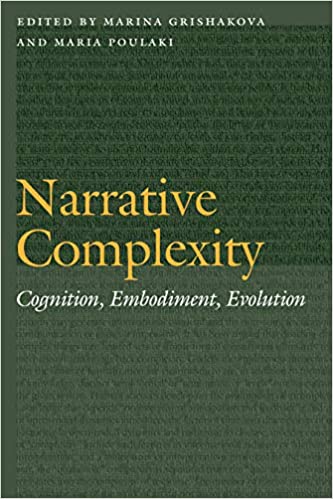
2018
Coderre, Emily L., Neil Cohn, Sally K. Slipher, Mariya Chernenok, Kerry Ledoux, and Barry Gordon. 2018. Visual and linguistic narrative comprehension in autism spectrum disorders: Neural evidence for modality-independent impairments. Brain and Language. 186: 44-59.
Cohn, Neil, Tim Roijackers, Robin Schaap, and Jan Engelen. 2018. Are emoji a poor substitute for words? Sentence processing with emoji substitutions. In T.T. Rogers, M. Rau, X. Zhu, & C. W. Kalish (Eds.), Proceedings of the 40th Annual Conference of the Cognitive Science Society (pp. 1524-1529). Austin, TX: Cognitive Science Society.
Cohn, Neil. 2018. Visual Language Theory and the scientific study of comics. In Wildfeuer, Janina, Alexander Dunst, Jochen Laubrock (Ed.). Empirical Comics Research: Digital, Multimodal, and Cognitive Methods. (pp. 305-328) London: Routledge.
Manfredi, Mirella, Neil Cohn, Mariana De Araújo Andreoli, and Paulo Sergio Boggio. 2018. Listening beyond seeing: Event-related potentials to audiovisual processing in visual narrative. Brain and Language. 185: 1-8
Cohn, Neil. Combinatorial morphology in visual languages. In Booij, Geert (Ed.). The Construction of Words: Advances in Construction Morphology. (pp. 175-199). London: Springer.
Cohn, Neil. 2018. In defense of a “grammar” in the visual language of comics. Journal of Pragmatics. 127: 1-19

2017
Cohn, Neil, Martin Paczynski, and Marta Kutas. 2017. Not so secret agents: Event-related potentials to semantic roles in visual event comprehension. Brain and Cognition. 119: 1-9.
Cohn, Neil, Vivian Wong, Kaitlin Pederson & Ryan Taylor. 2017. Path salience in motion events from verbal and visual languages. In G. Gunzelmann, A. Howes, T. Tenbrink, & E. J. Davelaar (Eds.), Proceedings of the 39th Annual Conference of the Cognitive Science Society (pp. 1794-1799). Austin, TX: Cognitive Science Society. (Poster)
Cohn, Neil, Ryan Taylor, and Kaitlin Pederson. 2017. A picture is worth more words over time: Multimodality and narrative structure across eight decades of American superhero comics. Multimodal Communication. 6(1): 19-37.
Cohn, Neil and Marta Kutas. 2017. What’s your neural function, visual narrative conjunction? Grammar, meaning, and fluency in sequential image processing. Cognitive Research: Principles and Implications. 2(27): 1-13.
Manfredi, Mirella, Neil Cohn, and Marta Kutas. 2017. When a hit sounds like a kiss: an electrophysiological exploration of semantic processing in visual narrative.Brain and Language. 169: 28-38.
Cohn, Neil and Patrick Bender. 2017. Drawing the line between constituent structure and coherence relations in visual narratives.Journal of Experimental Psychology: Learning, Memory, and Cognition. 43(2): 289-301
2016
Pratha, Nimish K., Natalie Avunjian, and Neil Cohn. 2016. Pow, punch, pika, and chu: The structure of sound effects in genres of American comics and Japanese manga. Multimodal Communication.5(2): 93-109.
Pederson, Kaitlin and Neil Cohn. 2016. The changing pages of comics: Page layouts across eight decades of American superhero comics. Studies in Comics. 7(1): 7-28.
Cohn, Neil. 2016. From Visual Narrative Grammar to Filmic Narrative Grammar: The narrative structure of static and moving images. In Wildfeuer, Janina & John A. Bateman (eds.). Film text analysis: New perspectives on the analysis of filmic meaning. (pp. 94-117). London, New York: Routledge.
Cohn, Neil, Beena Murthy, and Tom Foulsham. 2016. Meaning above the head: Combinatorial constraints on the visual vocabulary of comics. Journal of Cognitive Psychology.28(5): 559-574.
Foulsham, Tom, Dean Wybrow, and Neil Cohn. 2016. Reading without words: Eye-movements in the comprehension of comic strips. Applied Cognitive Psychology. 30: 566-579
Hagmann, Carl Erick, and Neil Cohn. 2016. The pieces fit: Constituent structure and global coherence of visual narrative in RSVP. Acta Psychologica. 164:157-164
Cohn, Neil and Sean Ehly. 2016. The vocabulary of manga: Visual morphology in dialects of Japanese Visual Language. Journal of Pragmatics. 92: 17-29.
Cohn, Neil. 2016. A multimodal parallel architecture: A cognitive framework for multimodal interactions. Cognition. 146: 304-323.
2015
Cohn, Neil. 2015. Narrative conjunction’s junction function: The interface of narrative grammar and semantics in sequential images.Journal of Pragmatics. 88: 105-132
Cohn, Neil, and Marta Kutas. 2015. Getting a cue before getting a clue: Event-related potentials to inference in visual narrative comprehension.Neuropsychologia. 77: 267-278.
Cohn, Neil, and Eva Wittenberg. 2015. Action starring narratives and events: Structure and inference in visual narrative comprehension. Journal of Cognitive Psychology. 27(7): 812-828.
Cohn, Neil. 2015. Climbing trees and seeing stars: Combinatorial structure in comics and diverse domains. In Toivonen, Ida, Piroska Csúri & Emilie van der Zee. (Ed). Structures in the Mind: Essays on Language, Music, and Cognition in Honor of Ray Jackendoff (pp. 379-392). Cambridge: MIT Press.
Cohn, Neil and Hannah Campbell. 2015. Navigating comics II: Constraints on the reading order of page layouts. Applied Cognitive Psychology. 29: 193-199.
Cohn, Neil, and Stephen Maher. 2015. The notion of the motion: The neurocognition of motion lines in visual narratives. Brain Research. 1601: 73-84.
Cohn, Neil and Kent Worcester. 2015. Visual Language: Neil Cohn and Kent Worcester in conversation. International Journal of Comic Art. 17(1): 1-23

2014
Cohn, Neil, Ray Jackendoff, Phillip Holcomb, and Gina Kuperberg. 2014. The grammar of visual narratives: Neural evidence for constituent structure in visual narrative comprehension. Neuropsychologia. 64: 63-70.
Cohn, Neil. 2014. You’re a good structure, Charlie Brown: The distribution of narrative categories in comic strips.Cognitive Science, 38(7), 1317-1359.
Cohn, Neil. 2014. Building a better “comic theory”: Shortcomings of theoretical research on comics how to overcome them. Studies in Comics. 5(1), 57-75.
Cohn, Neil. 2014. The architecture of visual narrative comprehension: the interaction of narrative structure and page layout in understanding comics.Frontiers in Psychology. 5: 680
Cohn, Neil. 2014. Framing “I can’t draw”: The influence of cultural frames on the development of drawing. Culture & Psychology. 20(1): 102-117.
2013
Cohn, Neil. 2013. Beyond speech balloons and thought bubbles: The integration of text and image. Semiotica. 2013(197): 35-63.
Cohn, Neil, and Martin Paczynski. 2013. Prediction, events, and the advantage of Agents: The processing of semantic roles in visual narrative. Cognitive Psychology. 67 (3): 73-97.
Cohn, Neil. 2013. Navigating comics: An empirical and theoretical approach to strategies of reading comic page layouts. Frontiers in Cognitive Science. 4: 1-15
Cohn, Neil. 2013. Visual narrative structure. Cognitive Science. 37(3): 413-452.
2012
Cohn, Neil. 2012. Explaining “I can’t draw”: Parallels between the structure and development of language and drawing. Human Development. 55(4): 167-192
Cohn, Neil, Amaro Taylor-Weiner, and Suzanne Grossman. 2012. Framing attention in Japanese and American comics: Cross-cultural differences in attentional structure. Frontiers in Cultural Psychology. 3: 1-12
Cohn, Neil, Martin Paczynski, Ray Jackendoff, Phil Holcomb, and Gina Kuperberg. 2012. (Pea)nuts and bolts of visual narratives: Structure and meaning in sequential image comprehension. Cognitive Psychology. 65(1): 1-38
Cohn, Neil. 2012. Comics, linguistics, and visual language: The past and future of a field. In Bramlett, Frank (ed). Linguistics and the Study of Comics (pp. 92-118). New York: Palgrave Macmillan.
2011
Cohn, Neil. 2011. A different kind of cultural frame: An analysis of panels in American comics and Japanese manga. Image[&]Narrative. 12(1): 120-134.
2010
Cohn. Neil. 2010. Japanese Visual Language: The structure of manga. In Johnson-Woods, Toni (ed). Manga: An Anthology of Global and Cultural Perspectives. (pp. 187-203). New York: Continuum Books.
Cohn, Neil. 2010. Extra! Extra! Semantics in comics!: The conceptual structure of Chicago Tribune advertisements. Journal of Pragmatics. 42(11): 3138–3146.
Cohn. Neil. 2010. The limits of time and transitions: Challenges to theories of sequential image comprehension. Studies in Comics. 1(1): 127-147.
Kuperberg, Gina, Arim Choi, Neil Cohn, Martin Paczynski, and Ray Jackendoff. 2010. Electrophysiological correlates of complement coercion. Journal of Cognitive Neuroscience. 22(12): 2685-2701.
2007
Cohn, Neil. 2007. A visual lexicon. Public Journal of Semiotics. 1(1): 35-56.
2005
Cohn, Neil. 2005. Un-defining “comics”: Separating the cultural from the structural in “comics.”International Journal of Comic Art, Vol. 7(2): 236-248.

2004
Cohn, Neil. 2004. Methods of the enlightened. Aya-Com Text, 1: 1-7
2003
Cohn, Neil. 2003. A time frame of mind. Berkeley Undergraduate Journal, 31: 1-34.
Popular and other writing
2020
Cohn, Neil, Jennifer Daniel, and Erik Carter. 2020. Melting Face Proposal for Unicode 14.0. Unicode® Technical Committee Document Registry. L2/20-072
Cohn, Neil and Jennifer Daniel. 2020. Breath-Face Proposal for Unicode 14.0. Unicode® Technical Committee Document Registry. L2/20-066
Cohn, Neil and Jennifer Daniel. 2020. Face Holding Back Tears Proposal for Unicode 14.0.Unicode® Technical Committee Document Registry. L2/20-064
2019
Daniel, Jennifer and Neil Cohn. 2019. Smileys for consideration for Unicode 14.0. Unicode® Technical Committee Document Registry. L2/19-389
Daniel, Jennifer and Neil Cohn. 2019. Comparison of Unicode Faces and JVL morphemes. Unicode® Technical Committee Document Registry. L2/19-390
2015
Cohn, Neil. 2015. Will emoji become a new language? BBC-Futures. October 13, 2015
Writings translated
Cohn, Neil. 2020. マンガの認知科学:ビジュアル言語で読み解くその世界.[The Visual Language of Comics]. Translated into Japanese by Jun Nakazawa. Kitaohji.
Cohn, Neil. 2016. 視覚的物語の理解の仕組 [The architecture of visual narrative comprehension]. International Manga Research Center. Translated into Japanese by Tadahiro Tanaguchi.
Cohn, Neil. Aug. 2013-Present. El lingüista ilustrado [The Visual Linguist]. Ongoing monthly column in Revista Exégesis. Translated into Spanish by Simud.
Cohn, Neil, Martin Paczynski, Phil Holcomb, Ray Jackendoff, and Gina Kuperberg. 2011. Impacto da estrutura e significado na imagem seqüencial Compreensão [Impact of structure and meaning on sequential image comprehension]. Translated into Portuguese by Pedro Moura. In Moura, Pedro (Ed). Rei Rubro. Antologia internacional de ensaios sobre banda desenhada, ilustração e animação. Vol. 1. Montesinos: Lisboa
Cohn. Neil. 2010. Разбијање Аефиниције Стрипа [Un-defining “comics”]. Translated into Serbian by Branko Djukić. Stripolis. Vol. 2.
Cohn. Neil. 2009. Razbijanje definicije “stripa”: odvajanje kulturalnog od strukturalnog u “stripu” [Un-defining “comics”]. Translated into Croatian by Monika Bregovic. Zarez. Vol. 247(8).
Selected Speaking
Workshops
2021. Visual Languages of Comics: Empirical Study of Comics from Around the World. Summer course Comic languages, Instituto Franklin de la Universidad de Alcalá, Spain. June 30, 2021.
2020. Multimodality. LOT (Landelijke Onderzoekschool Taalwetenschap) Winter School. January 2020.
2018. The architecture of multimodal cognition. Leibniz-Institut für Wissensmedien (IWM). Summer school for “Multimodality and knowledge processes”. June 7, 2018.
2018. The formal analysis and semantic interpretation of pictorial representations (co-taught with Gabriel Greenberg). University of Connecticut. Storrs, CT. March 16-17, 2018.
2017. The languages of comics (co-taught with Charles Forceville). Netherlands Research School of Media Studies. Amsterdam. June 3, 2017.
2015. Diversity in visual language studies. Kyoto Seika University. Kyoto, Japan. September 23, 2015.
2015. The Visual Language of Comics. University of Connecticut. Storrs, CT. June 23-24, 2015.
2014. The Cognition of the Visual Language of Comics. University of Bremen, Linguistics Department. Bremen, Germany. June 23, 2014.
2014. Linguistics, Comics, and the Cognition of Visual Language. University of Freiburg, Institute of Media. Freiburg, Germany. June 21, 2014.
2013. Workshop on Visual Narrative Grammar. Stony Brook University, Linguistics Department. Stony Brook, NY. October 5, 2013.
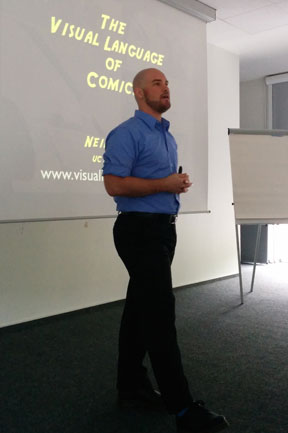
Keynotes
2023. The grammar of visual narratives. IGEL. Krosno, Monopoli, Italy. September 18, 2023.
2023. The multimodal language faculty and the visual languages of comics. The Polish Cognitive Linguistics Association 2022. Krosno, Poland, UAE. September 13, 2023.
2023. The grammar of visual narratives. Drawing meaning through visual narratives. Online conference hosted by Presidency University, India. August 3, 2023.
2022. The multimodal language faculty and the visual languages of comics. EMNLP 2022. Abu Dhabi, UAE. December 9, 2022. dot: 10.48448/jekx-jw96
2021. The Grammar of Visual Narratives: From Comics to Film and Neurocognition. The Society for the Cognitive Studies of the Moving Image. June 10, 2021
2019. Reimagining the language faculty: A multimodal modal of language. 40th TABU Dag. University of Groningen. Groningen, The Netherlands. June 2019.
2017. The Visual Language of Comics: What comics can tell us about the mind (and vice versa). 11th International Symposium on Iconicity in Language and Literature. University of Brighton, UK. April 7, 2017.
2015. The scientific study of comics’ visual language. Comicology: Probing practical scholarship. Kyoto Seika University and the Kyoto Manga Museum, Japan. September 26, 2015.
2015. Cognition, complexity, and cross-cultural diversity of the grammar of visual narratives. Meeting on the Psychology of Manga. Chiba University, Japan. September 19, 2015.
2014. What comics can tell us about the mind (and vice versa). German ComFor Conference. Berlin, Germany. September 27, 2014.
2014. The neurocognition of comics: What comics can tell us about the mind (and vice versa). Empirical approaches to comics workshop. Berlin, Germany. September 20, 2014.
2012. Visual language theory: The structure of sequential images. Meeting on the Psychology of Manga. Chiba University, Japan. August 7, 2012. [In English and Japanese]
2009. What is “Visual Language”? Visual Thinking Lecture Series. University of Toronto, Canada, May 14, 2009.
2008. What is “Visual Language”? Visual and Iconic Languages Conference. San Diego, CA, July 22, 2008.
2007. Foundations for a natural visual language grammar. Visual and Iconic Languages Conference. University of New Mexico, August 2, 2007.

Selected Invited lectures
2023
Comics and Cognitive Science. Lecture and discussion with Chris Ware. CogFest Days, The Ohio State University. March 25, 2023
2022
Reimagining the language faculty: A multimodal model of language. ACLC Seminar, University of Amsterdam. September 23, 2022
The visual languages of comics: Empirical study of comics around the world. Lunchtime lecture series, University of Graz. June 1, 2022
The grammar of visual narrative. The cognitive value of serial storytelling seminar, Universidad de Sevilla. April 1, 2022
Reimagining the language faculty: A multimodal model of language. University of Glasgow, Psychology and Neuroscience Friday seminar series. February 25, 2022
Reimagining the language faculty: A multimodal model of language. Linguae Lectures, Jean Nicod Institute. February 10, 2022
Redrawing the lines between language and graphics. Linguae Lectures, Jean Nicod Institute. February 8, 2022
2021
Reimagining the language faculty: A multimodal model of language. Abralin. December 1, 2021
Redrawing the lines between language and graphics. Adobe Inc. Nov 9, 2021
Reimagining the language faculty: A multimodal model of language. SRI International. May 6, 2021
The grammar of visual narrative: The structure and (neuro)cognition of sequential images. Cognition in Complex Environments Group Seminar, University of Stirling. April 30, 2021.
The visual language of comics. Institute of English Studies, Institute of Wroclaw. January 22, 2021
Reimagining the language faculty: A multimodal model of language. Institute of English Studies, Institute of Wroclaw. January 21, 2021A multimodal reconsideration of language(s) and thought. Cognitive Science Colloquium at University of Tübingen. January 14, 2021.
2020
The grammar of visual narratives: The structure of sequential images. Super Linguistics Colloquium, University of Oslo. October 2, 2020.
Prediction in visual narrative processing. Groningen/Tilburg Workshop on Visual Narrative. September 25, 2020. (Co-Host)
2019
The grammar of visual narratives. Donders Institute. Nijmegen, The Netherlands. April 16, 2019.
The grammar of visual narratives. CLCG colloquium. University of Groningen. Groningen, The Netherlands. January 9, 2019.
2018
The grammar of visual narratives. Common ground colloquium. University of Pennsylvania. Philadelphia, PA. March 22, 2018.
A multimodal architecture of language. Stony Brook University Linguistics Department Colloquium. Stony Brook, NY. March 19, 2018.
A multimodal architecture of language. Max Plank Institute for Psycholinguistics. Nijmegen, The Netherlands. March 8, 2018.
2017
Narrative Grammar. Workshop on narrative. University of Strathclyde, UK. May 20, 2017.
The Visual Language of Comics. Birkbeck University of London, UK. April 5, 2017.
This is your brain on comics. University of Essex, UK. April 4, 2017.
The Visual Language of Comics. Sheffield Hallam University, UK. April 3, 2017.
Fluency of the Visual Language of Comics. Center for the Interdisciplinary study of Language and Literacy. Northern Illinois University. March 22, 2017.
The grammar(s) of visual narrative: What can comics tell us about cross-modal cognition? Cognition, Communication and Learning guest seminar, Lund University, Sweden. March 7, 2017.
Visual Language Theory and the scientific study of comics. Empirical Studies in Comics Conference. Bremen University, Germany. February 6-9, 2017.
2016
The structure and cognition of visual narratives. Centre for Cognitive Semiotics Lecture Series. Lund University, Sweden. November 17, 2016.
Cross-cultural diversity and the cognition of visual narratives. Diversity in Language, Culture and Cognition colloquium series. Max Plank Institute for Psycholinguistics. Nijmegen, The Netherlands. November 10, 2016.
Style and Substance in the Visual Languages of Comics. Mixed media in comics. St. John’s, Newfoundland, Canada. October 14-15, 2016.
Visual Narrative Grammar. IGEL 2016 meeting: International society for the empirical study of literature. Chicago, IL. July 8, 2016.
The structure and cognition of visual narrative. Mälardalen University. Sweden. April 21, 2016.The Visual Language of Comics. University of Niš Center for Cognitive Studies lecture series. Niš, Serbia. April 13, 2016.
2015
The Visual Language of Comics: What comics can tell us about the mind (and vice versa). UC Berkeley School of Information Sciences. Berkeley, CA. March 17, 2015.
2014
The cognition of the visual language of comics. CITEC, University of Bielefeld. Bielefeld, Germany. September 24, 2014.
The visual language of comics: What comics can tell us about the mind. Microsoft FUSE Labs. Redmond, WA. August 4, 2014.
The narrative grammar of comics, film, and discourse. Recent Paradigms of Film Studies Lecture Series. University of Bremen. Bremen, Germany. June 25, 2014. The structure of events. Psycholinguistics lecture series. Saarland University. Saarbrücken, Germany. June 17, 2014.
2013
The grammar of visual narratives. Stony Brook University Linguistics Department Colloquium. Stony Brook, NY. October 4, 2013.
Visual language theory: What comics can tell us about the mind (and vice-versa). US Navy: Space and Naval Warfare Systems Center—Pacific. San Diego, CA. March 6, 2013.
2009
What is “Visual Language”? Psychology Department Brown Bag Lunch Talks, Dartmouth University, October 22, 2009.
Foundations for a visual language grammar. Workshop on Computational Models of Narrative. MIT, October 9-10, 2009.
Superheroes in a Globally Connected World. Panel discussion with Chip Gidney, and Naif al-Mutwa at Tufts University, January 26, 2009.
2008
What comics can tell us about the mind? VizThink’08. San Francisco, CA, January 27-29, 2008.
2007
The visual language of comics. CAST, Inc. Wakefield, MA, March 14, 2007.

